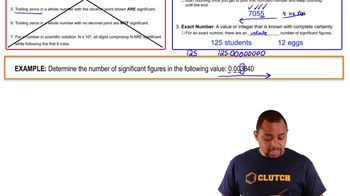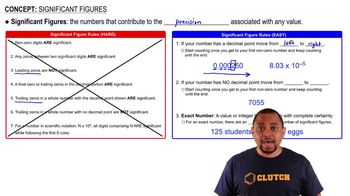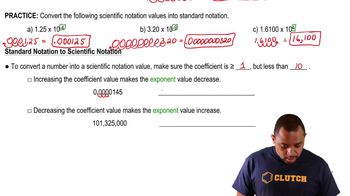Here are the essential concepts you must grasp in order to answer the question correctly.
Significant Figures
Significant figures are the digits in a number that contribute to its precision. This includes all non-zero digits, any zeros between significant digits, and trailing zeros in the decimal portion. Understanding significant figures is crucial for accurately reporting measurements and calculations in chemistry, as it reflects the precision of the data.
Recommended video:
Significant Figures Example
Rules for Operations with Significant Figures
When performing calculations, the number of significant figures in the result is determined by the operation being performed. For multiplication and division, the result should have the same number of significant figures as the measurement with the least significant figures. For addition and subtraction, the result should be rounded to the least precise decimal place.
Recommended video:
Significant Figures Rules
Scientific Notation
Scientific notation is a way of expressing numbers that are too large or too small to be conveniently written in decimal form. It is represented as a product of a number between 1 and 10 and a power of ten. Understanding how to manipulate numbers in scientific notation is essential for performing calculations involving very large or very small quantities, especially in chemistry.
Recommended video:
Standard Notation to Scientific Notation
 Verified step by step guidance
Verified step by step guidance


